
Tibor Reich was born in Budapest in 1916 into a family of textile industrialists. The vivid colours of the fertile Hungarian countryside and the brilliant ribbons made for peasant costumes in his father’s factory gave Tibor a love of colour.
The ideas and artistic developments emanating from the Vienna Werkstatt and the Bauhaus were influential throughout Europe and created a climate in which the young Tibor grew and flourished.
After a period of architectural training, he went to Vienna to study textile design and technology.
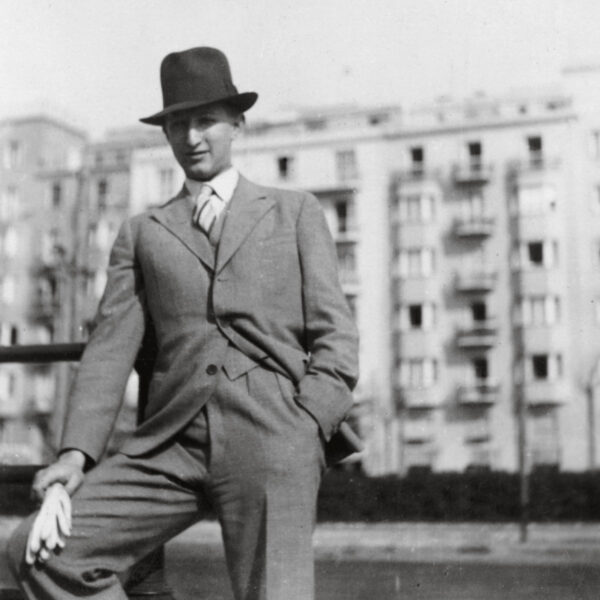
1933
Tibor, Vienna
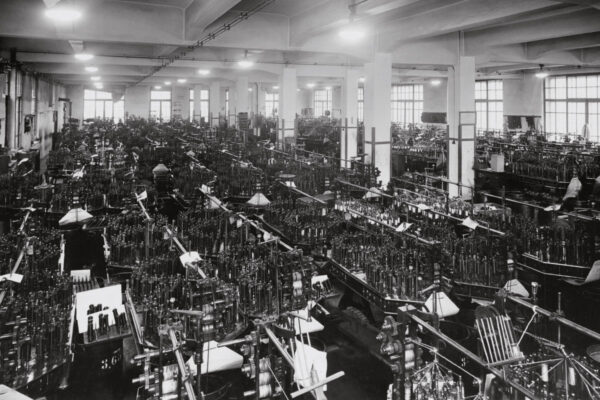
1926
Tibor’s family factory, Reich Adolf Fia, Budapest
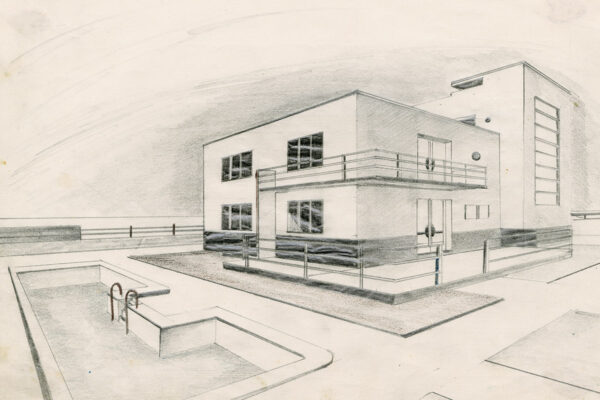
1933
Modernist architectural study, Budapest
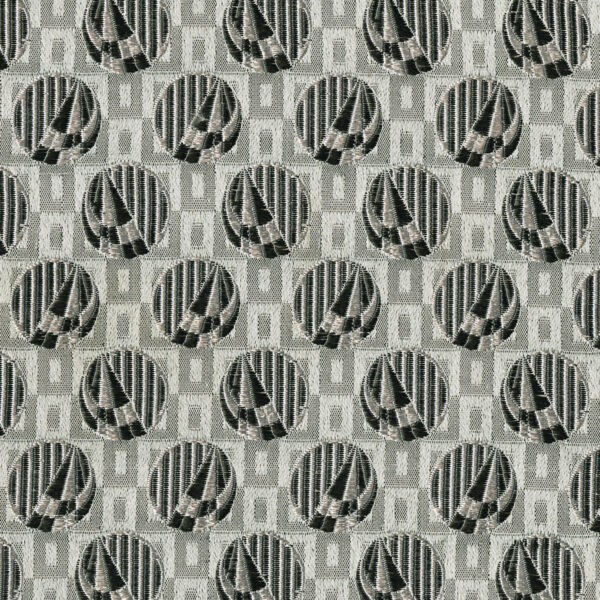
1933
Tibor’s first jacquard textile
“To break into an age old industry you have to do something new, I had an ambition to be different.”
In 1936 Tibor enrolled to study at Leeds University, a leading centre for textile research. Tibor used his love of nature, folk art and modernism to create his distinctive language in both woven and printed textile design.
His early designs were exhibited alongside the works of Henry Moore and John Nash. They were later used by prestigious couture houses including Molyneux, Hardy Amies and Norman Hartnell.
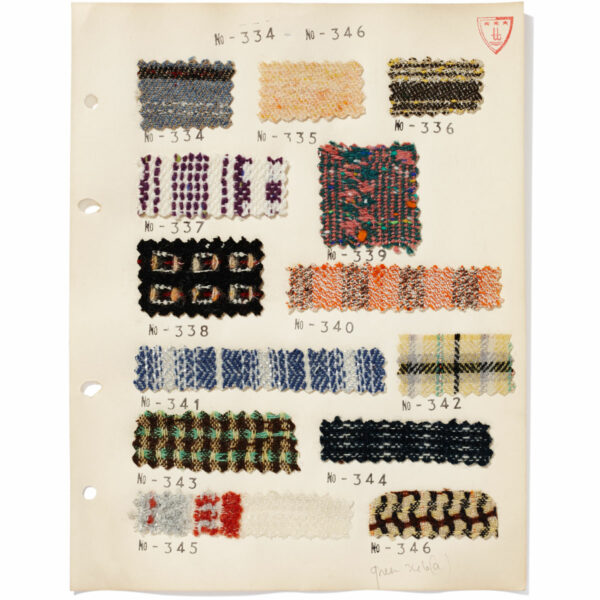
1943
Early couture designs
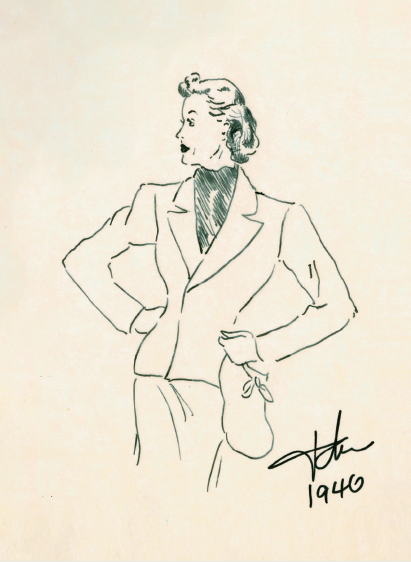
1944
Sketch for couture tweed jacket
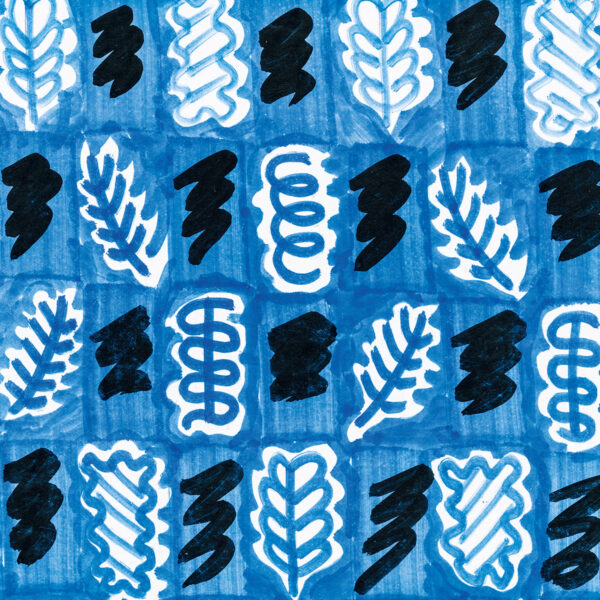
1946
Printed design experimenting with Tibor’s magic marker pen invention.
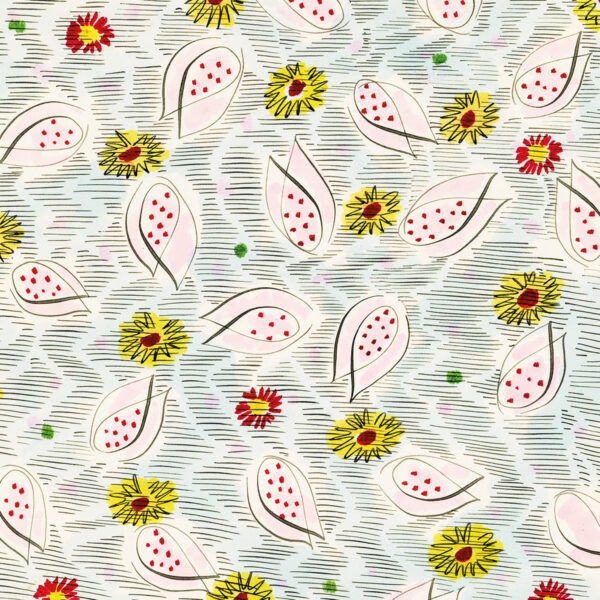
1943
Early printed textile design exhibited at the Cotton Board, Manchester
Frustrated at the lack of originality, Tibor sought to modernise British design. In 1945 he renovated an old flour foundry in Stratford-upon-Avon into his new textile business, Tibor Limited.
Tibor revealed his Deep Textured fabrics at the 1951 ‘Festival of Britain’ on the latest modern furniture. A virtuoso colourist, Tibor introduced bright new shades such as Kingfisher Blue, Sunshine Yellow and Siamese Pink.
Tibor fabrics, carpets and rugs were internationally celebrated and could be found on the Royal Yacht Britannia, at London Airport, The Royal Shakespeare Theatre and in the homes of the British public.
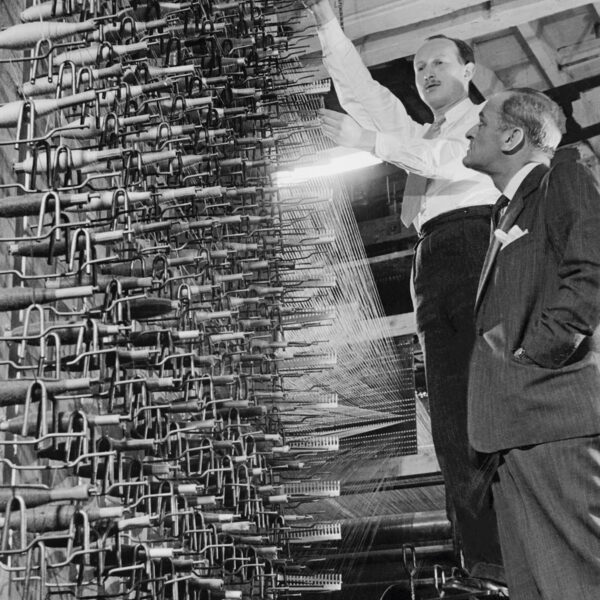
1945
Tibor loading his warping creel at Clifford Mill
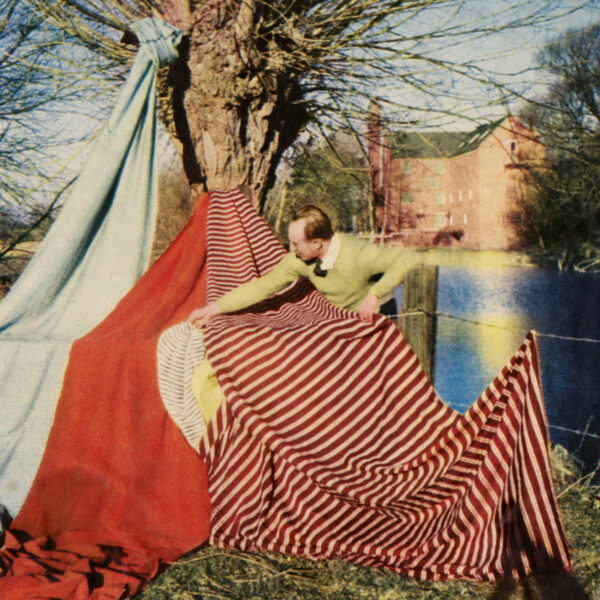
1946
Tibor infront of Clifford Mill.
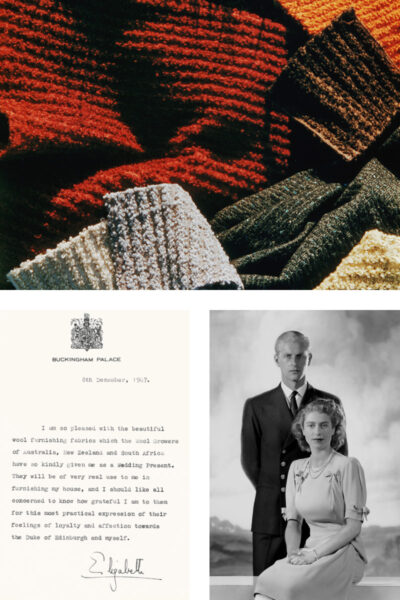
1946
Princess Fabric chosen by Princess Elizabeth for her wedding, alongside a letter from Princess Elizabeth with her thanks
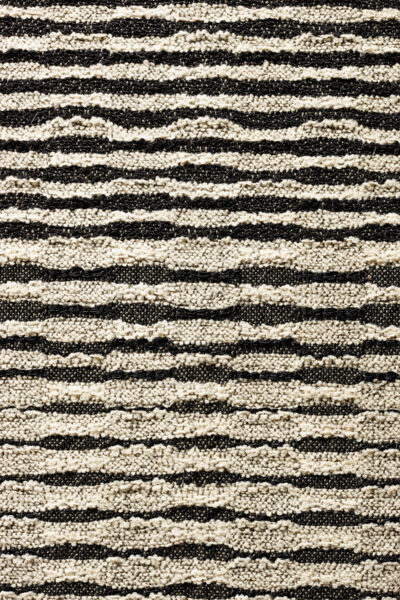
California Deep Texture weave
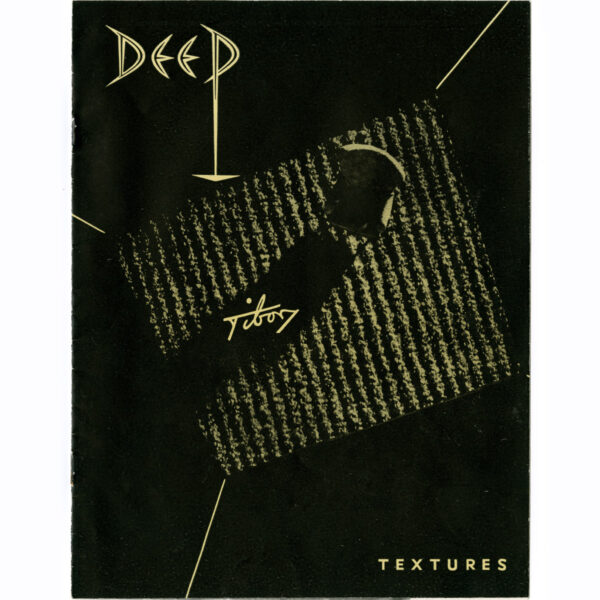
Tibor Deep Texture leaflet
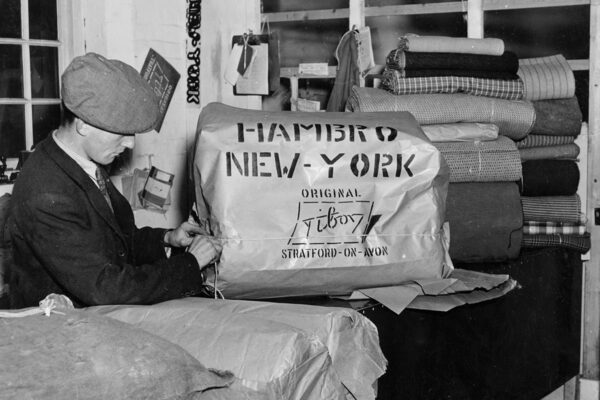
Tibor $100,000 export order to House of Hambro, New York
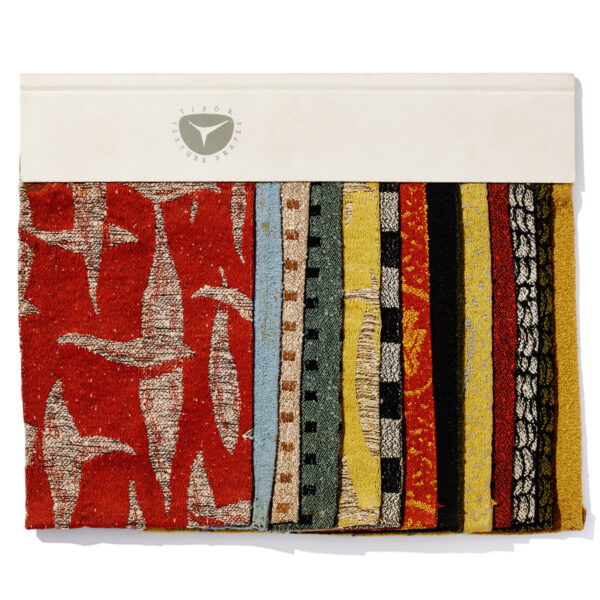
Festival of Britain jacquards
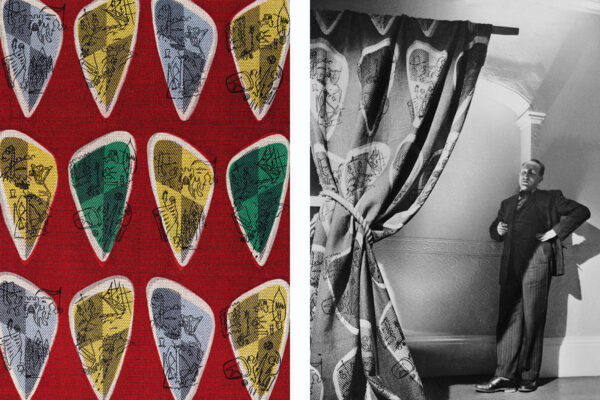
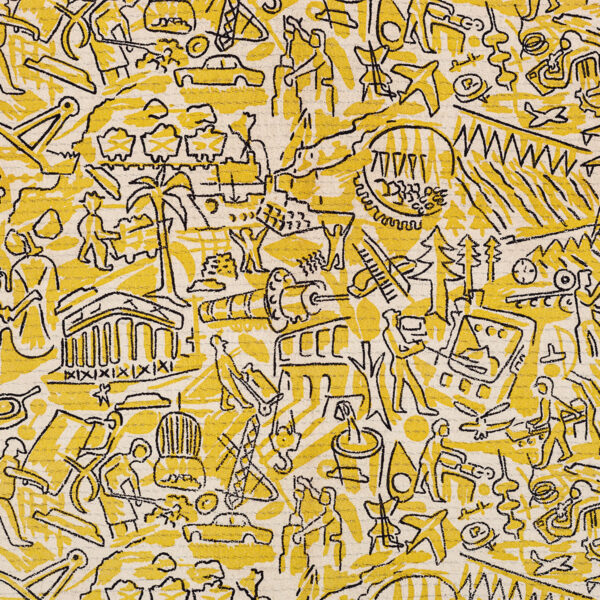
1954
Aluminium Story textureprint commisioned by British Aluminium Company
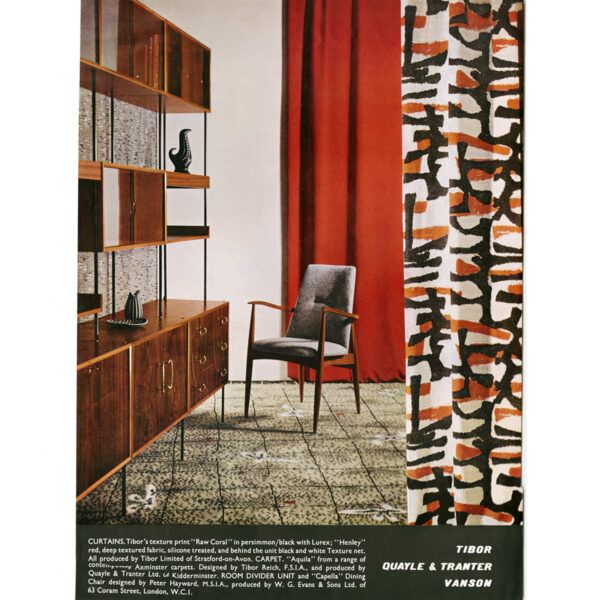
Advert for Tibor fabrics
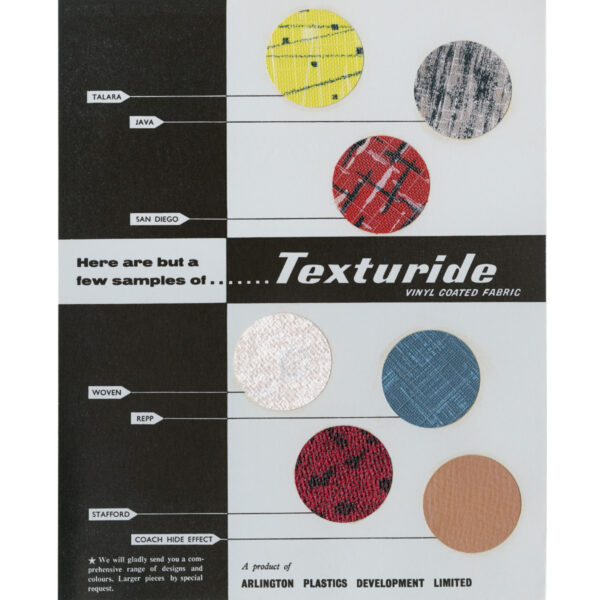
Vinyl coated fabric designed by Tibor
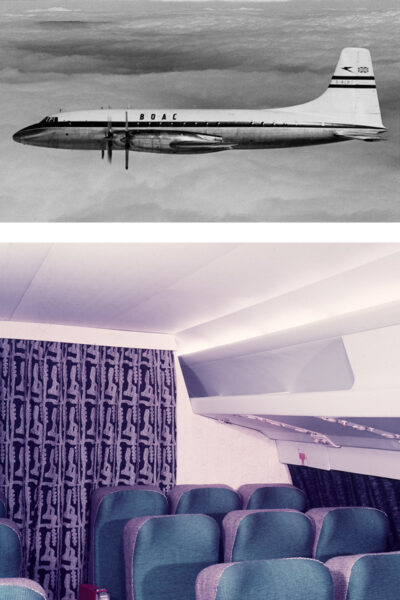
Bristol Britannia Airline BOAC & Tibor’s Pancho design
In 1955 Tibor returned to his Hungarian roots to create a pottery range named ‘Tigo-Ware’.
Influenced by his drawings of naïve characters of birds, women and Hungarian folk tales, pieces were named after Hungarian places to confuse the British public.
First shown at Tibor’s 1955 ‘Adventure with Colour’ Exhibition at Liberty in London, the range proved so successful that it was later produced by Denby.
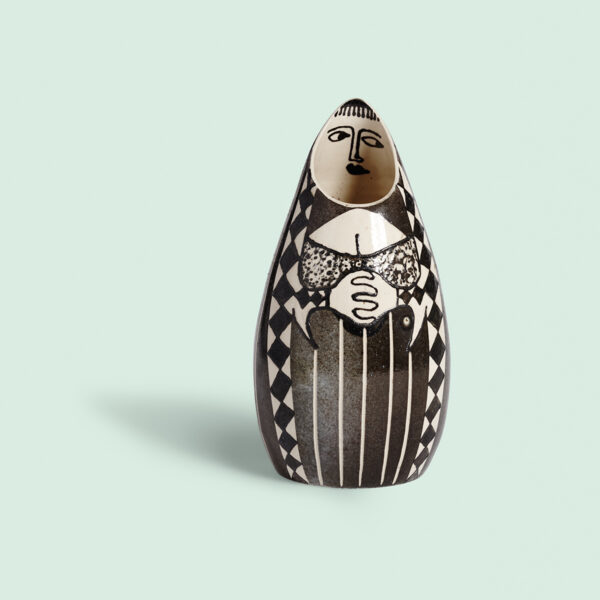
1953
Florence vase inspired by Tibor’s wife
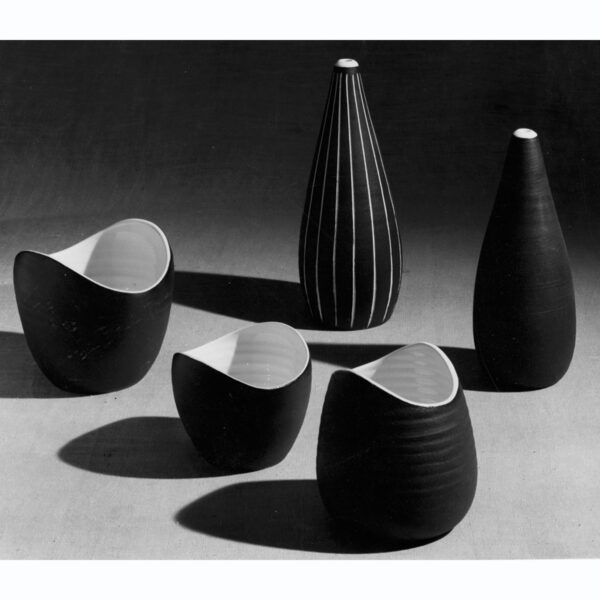
Tibor tok vases
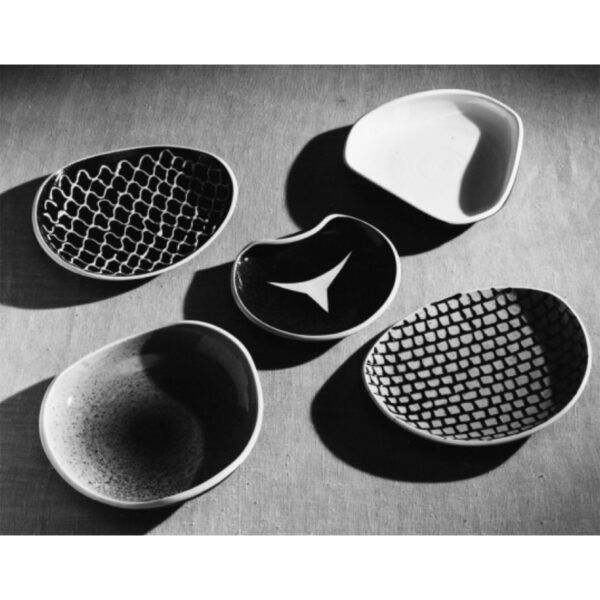
Tigo-ware sweet dishes
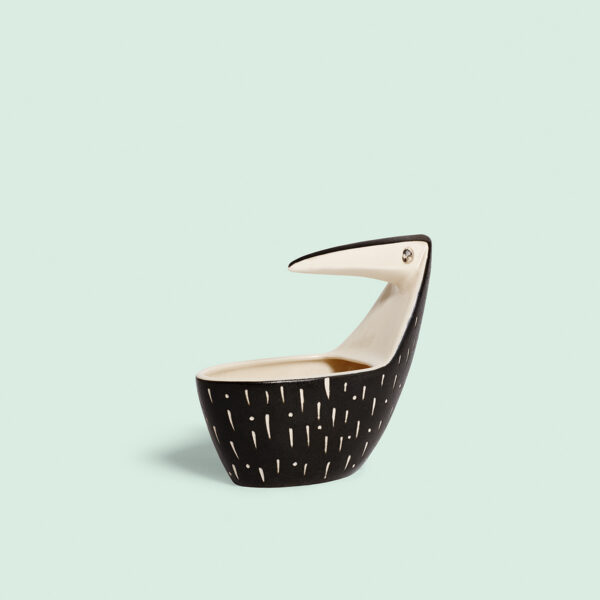
Hungarian Wuzu bird
In 1955 Tibor set about drawing and designing components for the Tibor house. Influenced by the interdisciplinary principle of the Bauhaus, this would become a laboratory and testing ground for new ideas.
The central fireplace dubbed the ‘Flaming Onion’ caused much controversy. Other features included refrigerated filing cabinets, a revolving delivery milk door, children’s cabins, indoor gardens and a lounge cabinet containing the ‘Seven Deadly Sins’.
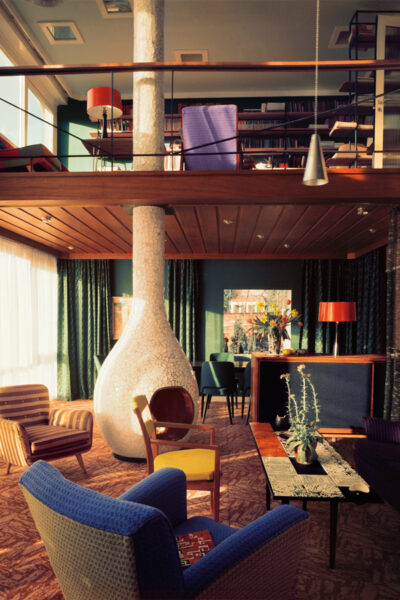
1956
The Tibor house and the Flaming Onion fireplace
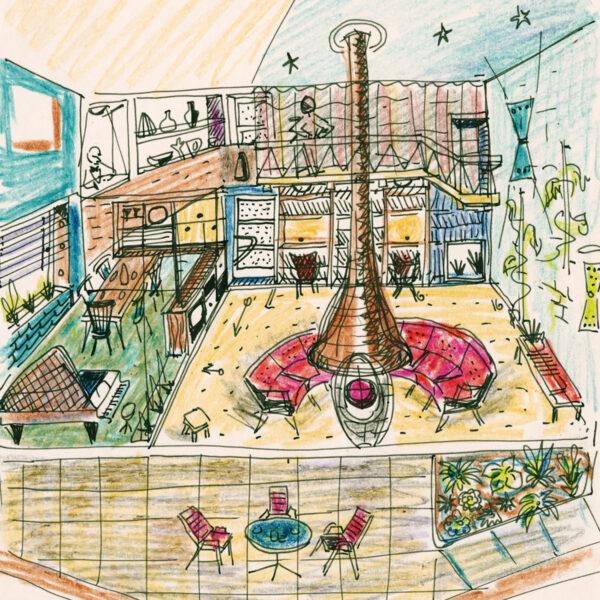
1953
Concept drawing for the Tibor house
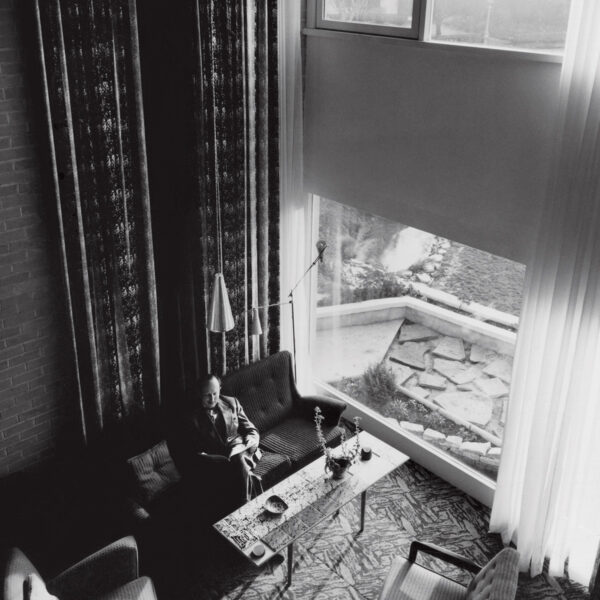
Shot from the gallery at the Tibor house
An avid photographer and a keen observer of nature, in 1956 Tibor brought these two interests together in a design process; Fotextur. Taking a photograph, making positive and negative prints from parts of it and arranging the prints in relationships, he created a ‘virtual texture’.
The resulting range was launched in 1957 to great acclaim, being awarded the first Design Council award for textile design of the year, presented by HRH The Duke of Edinburgh. Featured in a ten-page feature in Design magazine, the technique was described as ‘revolutionary’.
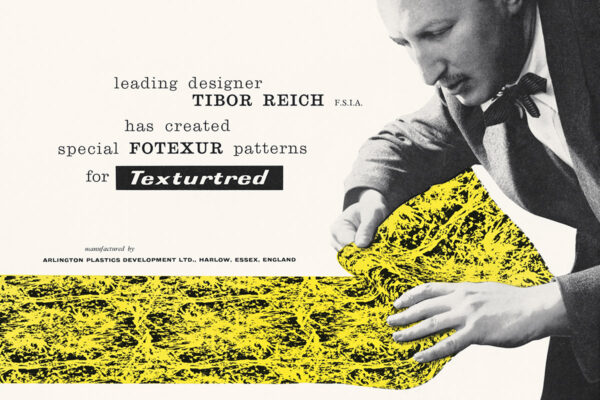
Textured Fotexur vinyl flooring
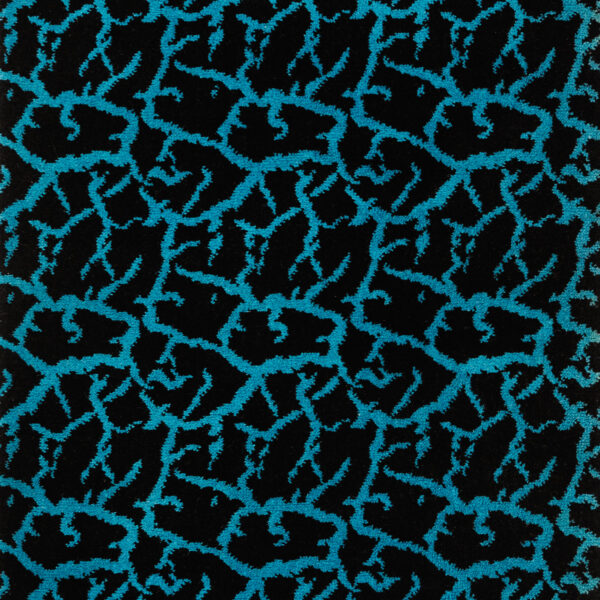
Cracked mud Wilton carpet
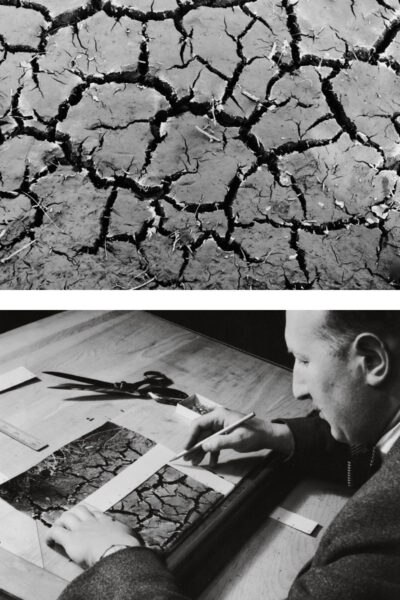
Cracked mud inspiration and process
The ‘Swinging Sixties’ offered new opportunities for Tibor, whose bright and bold colour schemes harmonised with contemporary artistic trends of psychedelia involving freedom of colour and composition. Op art inspired design ‘Opatia’ was awarded the Cotton Board Design Award and later used on the QEII.
In 1964 Tibor fabrics launched their Sloane Street showroom. Whilst tastes and fashions changed Tibor’s textiles continued to capture the beauty of nature and essence of hand craft in mass produced products. In 1973 Tibor received the Textile Institute Design Medal for his contribution to twentieth century textile design and his influence on public taste.
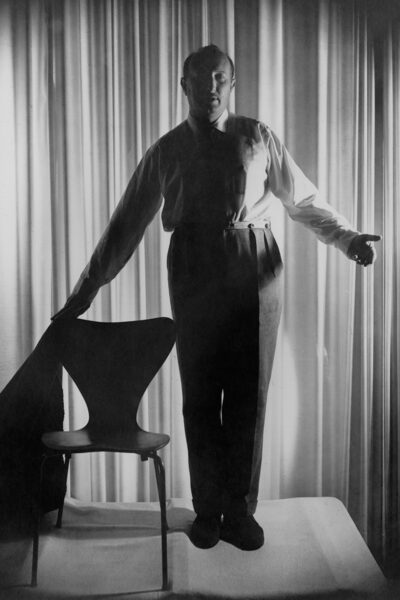
Tibor in his Sloane Street showroom
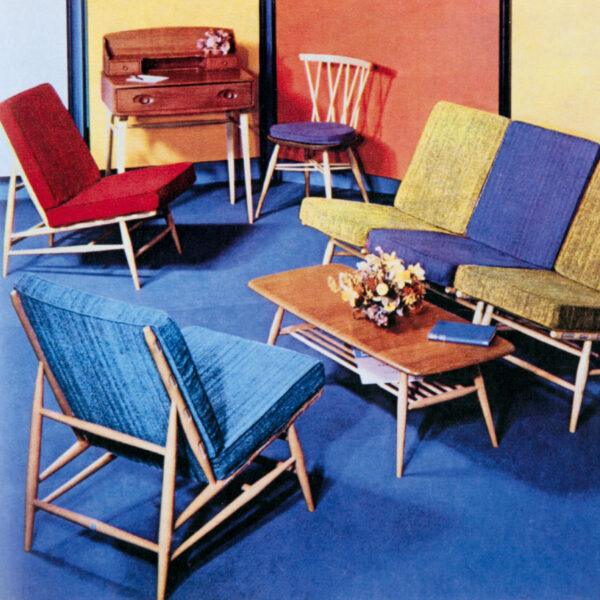
Ercol furniture featuring Tibor fabrics
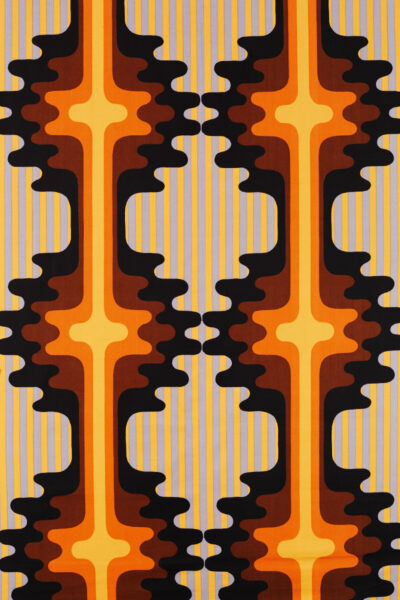
Tibor in Vienna
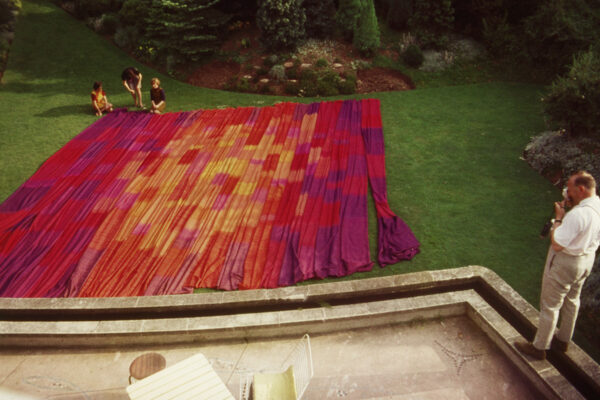
1965
Manchester University Tapestry
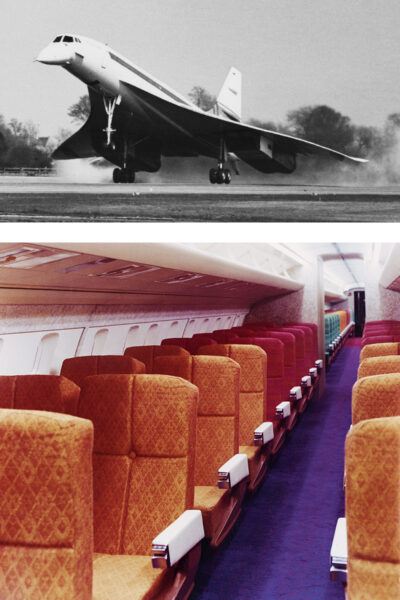
1966
Tibor fabrics inside Concorde
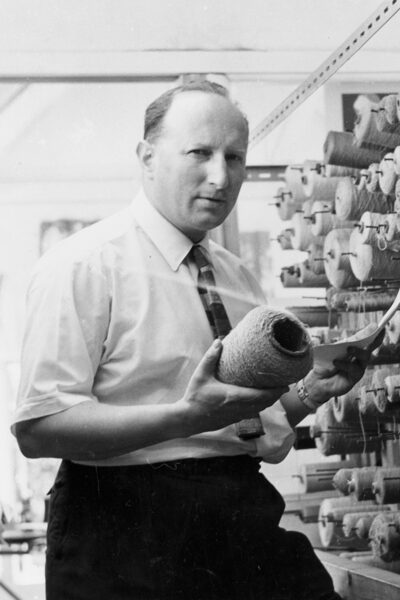
1972
Tibor at Clifford Mill